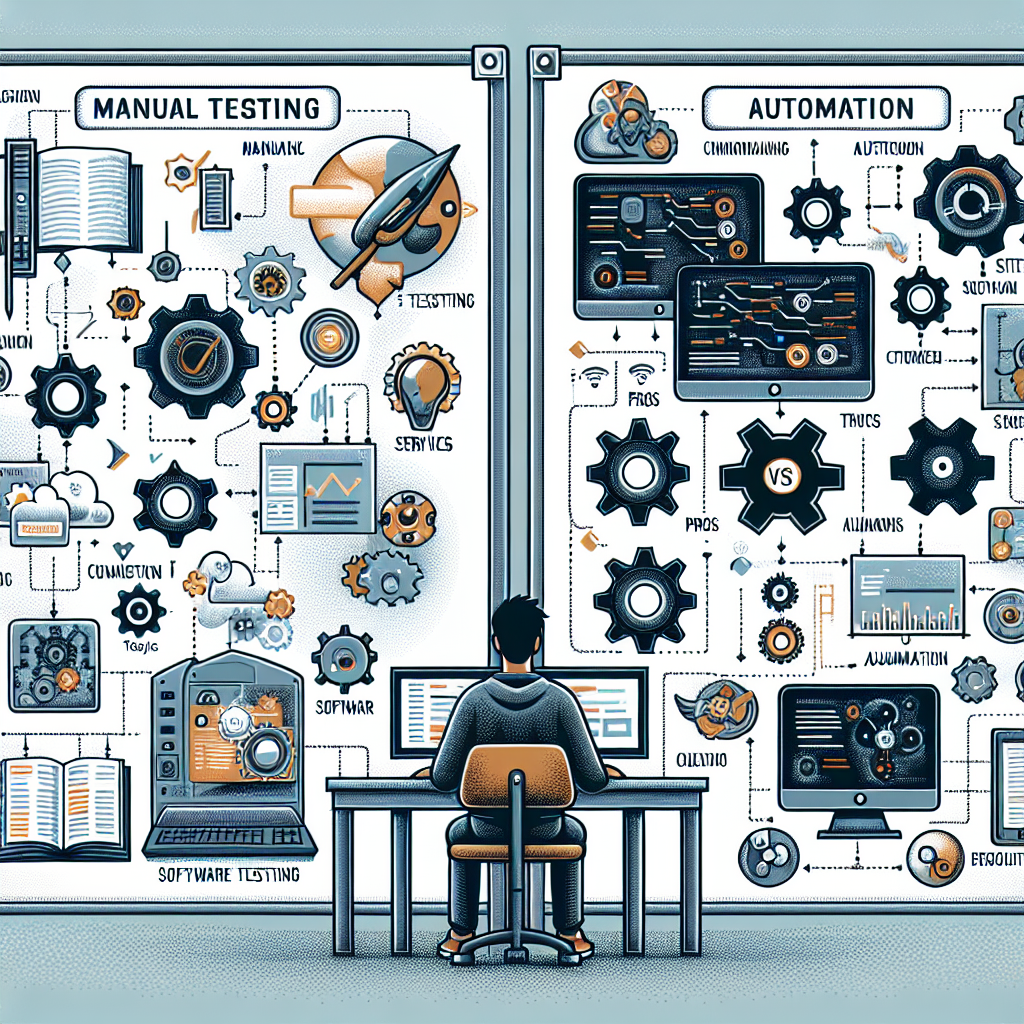Manual vs Automation Testing Services: Understanding the Differences for Better Software Quality
The world of software testing is constantly evolving. As businesses strive for faster releases and top-notch software quality, choosing between manual vs automation testing services has become a critical decision point. This article explores the key differences, advantages, challenges, and best practices of manual and automated software testing services, helping you make informed decisions for your project’s success.
Overview of Manual and Automation Testing
Manual testing services involve human testers executing test cases without the use of scripts or automation tools. Testers follow predefined scenarios to validate software functionality, user experience, and overall system behavior.
Automation testing services, on the other hand, use specialized software tools and scripts to automate the execution of tests. This approach is especially useful for repetitive, large-scale, or regression testing tasks.
- Manual Testing: Human-centric, intuitive, and flexible.
- Automation Testing: Tool-driven, repeatable, and efficient.
Key Differences Between Manual and Automation Testing
| Aspect | Manual Testing | Automation Testing |
|---|---|---|
| Execution Speed | Slower, human-driven | Faster, tool-driven |
| Accuracy | Prone to human errors | Highly accurate and consistent |
| Test Coverage | Limited, time-consuming | Extensive, scalable |
| Cost Effectiveness | Lower initial cost, higher over time | Higher setup cost, lower long-term cost |
| Suitability | Exploratory, UI/UX, ad hoc testing | Regression, load, performance testing |
Advantages of Manual Testing Services
- Intuitive Testing: Manual testers can identify usability issues, visual bugs, and user experience flaws that automated scripts might miss.
- Ad Hoc and Exploratory Testing: Manual testing is ideal for scenarios where test cases are not well-defined or constantly evolving.
- Quick Setup: No need for complex tool setup, making it faster to start testing in early project phases.
- Cost-effective for Small Projects: For short-term or low-scale projects, manual testing can be more economical.
Advantages of Automation Testing Services
- Speed and Reliability: Automated scripts execute tests much faster than humans and provide consistent, repeatable results.
- Reusability: Test scripts can be reused across multiple releases, saving time and resources.
- Scalability: Automation is effective for large-scale projects with extensive regression or performance testing needs.
- 24/7 Execution: Automated tests can run unattended at any time, supporting continuous integration and delivery pipelines.
- Enhanced Test Coverage: Automation allows for broader coverage in less time, reducing the risk of missed defects.
When to Use Manual vs Automation Testing Services
Best Scenarios for Manual Testing
- User interface (UI) and user experience (UX) validation
- Exploratory, ad hoc, and usability testing
- Testing newly designed features where automation scripts are not yet developed
- Short-term projects or projects with rapidly changing requirements
Best Scenarios for Automation Testing
- Large-scale regression testing across multiple builds
- Performance, load, and stress testing
- Projects with stable, repetitive test cases
- Continuous integration and delivery environments
LSI Keywords in the Context of Testing Services
To optimize your understanding (and website SEO) around manual vs automation testing services, it’s important to include related concepts, known as LSI (Latent Semantic Indexing) keywords. For this topic, some valuable LSI keywords include:
- software quality assurance
- test automation frameworks
- QA testing services
- regression testing
- performance testing
- bug tracking
- test case management
- continuous integration
- software development lifecycle
- functional testing
- automated test scripts
- exploratory testing
- user acceptance testing
Incorporating these terms helps cover a broader range of related topics, ensuring your content is relevant and comprehensive for both readers and search engines.
Combining Manual and Automated Testing for Optimal Results
The most effective software testing strategies often combine the strengths of both manual and automation testing services. While automation excels at speed and coverage, manual testing brings creativity and intuition to the table. A balanced approach might include:
- Manual testing for new features, usability, and exploratory testing
- Automation for repetitive, regression, and load testing
- Regular updates to automated test scripts based on manual test findings
- Leveraging automation to free up testers’ time for higher-level analysis
“A successful QA strategy leverages both human insight and the power of automation to achieve robust, reliable software.”
Frequently Asked Questions
- Is automation testing more cost-effective than manual testing?
- While automation testing requires a higher initial investment, it becomes more cost-effective over time by reducing repetitive manual work and accelerating test cycles.
- Can all tests be automated?
- No. Certain tests, such as exploratory and usability tests, benefit from human intuition and cannot be fully automated.
- What skills are required for automation testing?
- Automation testing engineers should be familiar with programming languages, test automation frameworks, and scripting tools.
- Which is better: manual or automation testing services?
- Each has its strengths; the best approach depends on your project’s requirements, resources, and time constraints.
Conclusion
Choosing between manual vs automation testing services is not a one-size-fits-all decision. By understanding the unique advantages and best-fit scenarios for each, QA teams can develop a robust software testing strategy. Leveraging the synergy between manual and automated testing ensures maximum software quality, fast time-to-market, and a superior user experience.

